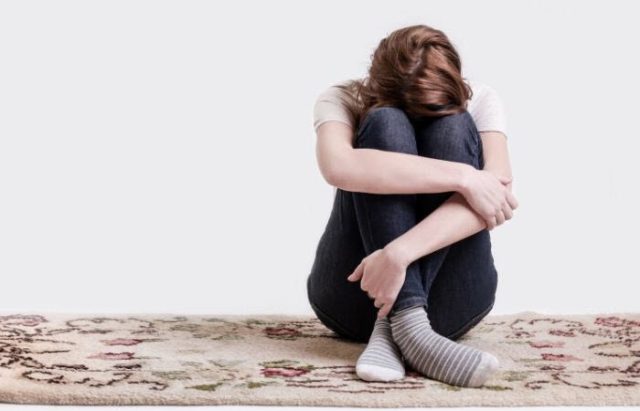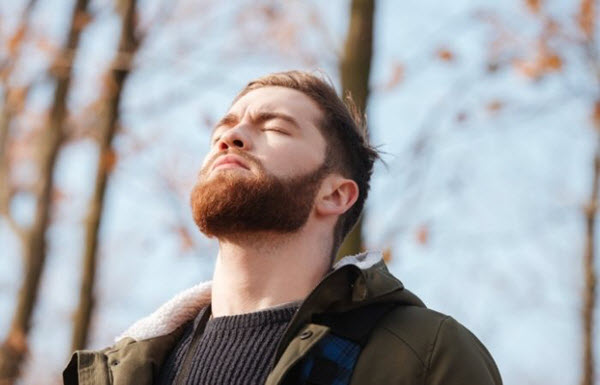Three Anxiety-Relief Tools for Those Who’ve Tried Everything

For most of my clients, I'm typically the last resort.
They've tried everything, they tell me. Meds. Therapy. Yoga. Meditation.
Nothing seems to break up their anxiety.
So that's when they come to me. I'm a consulting hypnotist, and I specialize in anxiety relief. Some have never thought of hypnosis – and others have been holding out until all options are exhausted.
Almost without fail, I get to widen my clients' belief of what is possible. Hypnosis shows them just how much control they do have over their emotions… and their lives.
Perhaps YOU'VE tried everything as well. Meds and therapy – our most common answers – are both powerful and effective. I know this because they had a huge impact on my own anxiety.
But sometimes you need something more.
Keep reading, because I'll explain three of my most effective anxiety relief tools. I teach these to my clients to give them techniques to use if their panic ever flares. These help thousands of people achieve breakthroughs they didn't think were possible. With that, let's get into it.
7-11 Breathing

Our first tool goes by many names – 7-11, 4-7-8, the Breathing Stretch, and more. No matter what you call it, the concept is the same: you breathe out for longer than you breathe in.
To do this, simply breathe in for a count of seven. Pause for a second, and then breathe out, for a count of 11. It helps if you purse your lips on the exhale.
This technique comes from eastern knowledge about yoga and breathwork. Why does this work? When your exhale is longer than your inhale, it triggers something called the Vagas Nerve. This part of you has parasympathetic control over your heart, lungs, and digestive organs. Put simply, it runs them automatically.
What's amazing is that we can take conscious control over this unconscious process. By breathing this way, we trigger the Vagas nerve to release calming chemicals in our brain.
It's a timeless yoga secret. Changing your breath changes your mind.
Jin Shin Jyutsu
Though it's gone mainstream in the East, over here in the West, Jin Shin Jyutsu is still largely unknown. And it's a shame – this technique is simple, rapid, and powerfully effective.
Jin Shin Jyutsu operates on similar methods as acupressure and acupuncture. According to Jin Shin Jyutsu, we can control five different emotions by squeezing each of our five fingers.
Our thumbs control worry. Our pointer fingers control panic. Our middle fingers control anger (easy to remember, right?). Our ring fingers control sadness, and our pinky fingers control our over-thinking.
When you're caught up in one of these emotions, all you do is take that finger in your other palm and squeeze until you feel a pulse.
Hold it for a few seconds. Notice how the emotion changes.
If it's reduced but not gone yet, keep holding.
Jin Shin Jyutsu has become one of my favorite techniques because it's just so easy to do. I teach it to all of my anti-anxiety clients, and I've known people to use it in some interesting settings: before a skydive, in a negotiation meeting, and after a self-defense fistfight.
Personally, this one has become my go-to, especially before a big event.
Hypnosis

Above all, the tool that helps the most is hypnosis. The half-sibling of meditation, hypnosis is one of the most underrated mental health tools that we use today.
Hypnosis has been studied and backed by science for nearly a hundred years. Following WWI and WWII, hypnosis was a primary treatment for PTSD. In 1957, the American Medical Association approved it as an effective form of treatment. The National Cancer Institute lists hypnosis as an accredited form of treatment for the disease.
With its links to meditation, it's surprising that hypnosis is still sitting in the shadows. Meditators who try hypnosis often report that it feels like they were simply doing their daily practice. People can get the same health benefits from meditation as hypnosis, and they often get them faster.
Most guided meditations are, in fact, hypnosis. A teacher guides listeners into a state of deep relaxation (just like hypnosis), and while in this trance, they give beneficial suggestions.
Grace Smith, a top hypnotherapist active today, says, “Hypnosis is simply meditation with a goal.” Relaxation, calm, and a peaceful mind are all goals that hypnosis helps with.
There's still so much mystery and misinformation that surrounds hypnosis today. Though powerfully effective, many haven't given hypnosis a shot.
That's why many hypnotists – myself included – are working to demystify this healing technique. If you'd like to try hypnosis for free, I release a new session every week on Instagram TV (@makingyourmeaning). You'll find sessions on Anxiety Relief, Insomnia, and even Releasing Emotional Baggage. If you give it a shot, let me know your thoughts – I love it when people say hello.
Though the tools I've outlined aren't yet mainstream, they've provided powerful relief for my clients. Anxiety can be crippling – but it doesn't have to hold you back. Whether you use these tools as additional help, or you make them your go-to the next time anxiety strikes, they can have an incredible impact on your life. What I want to know is, which one will you use first?

